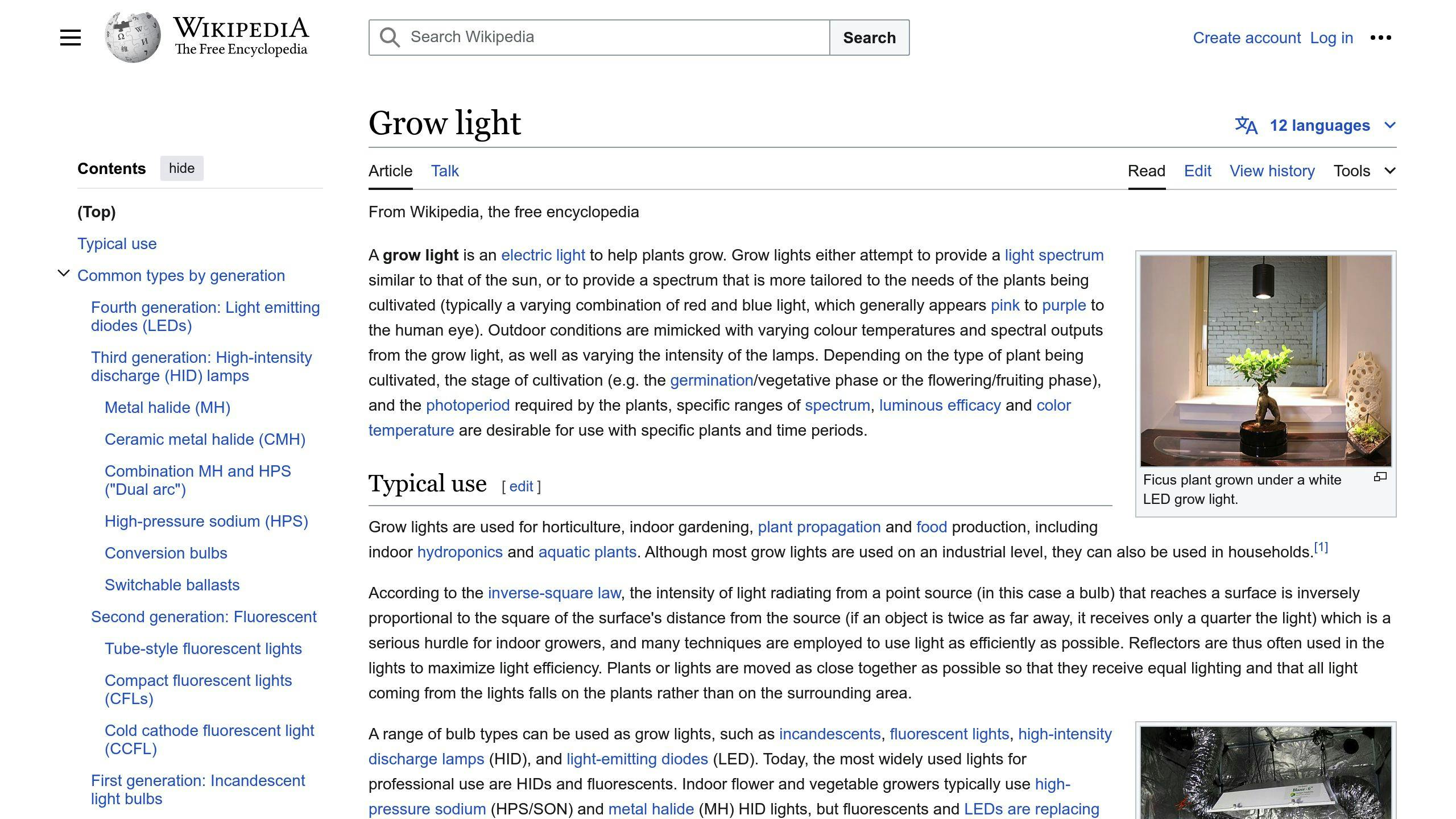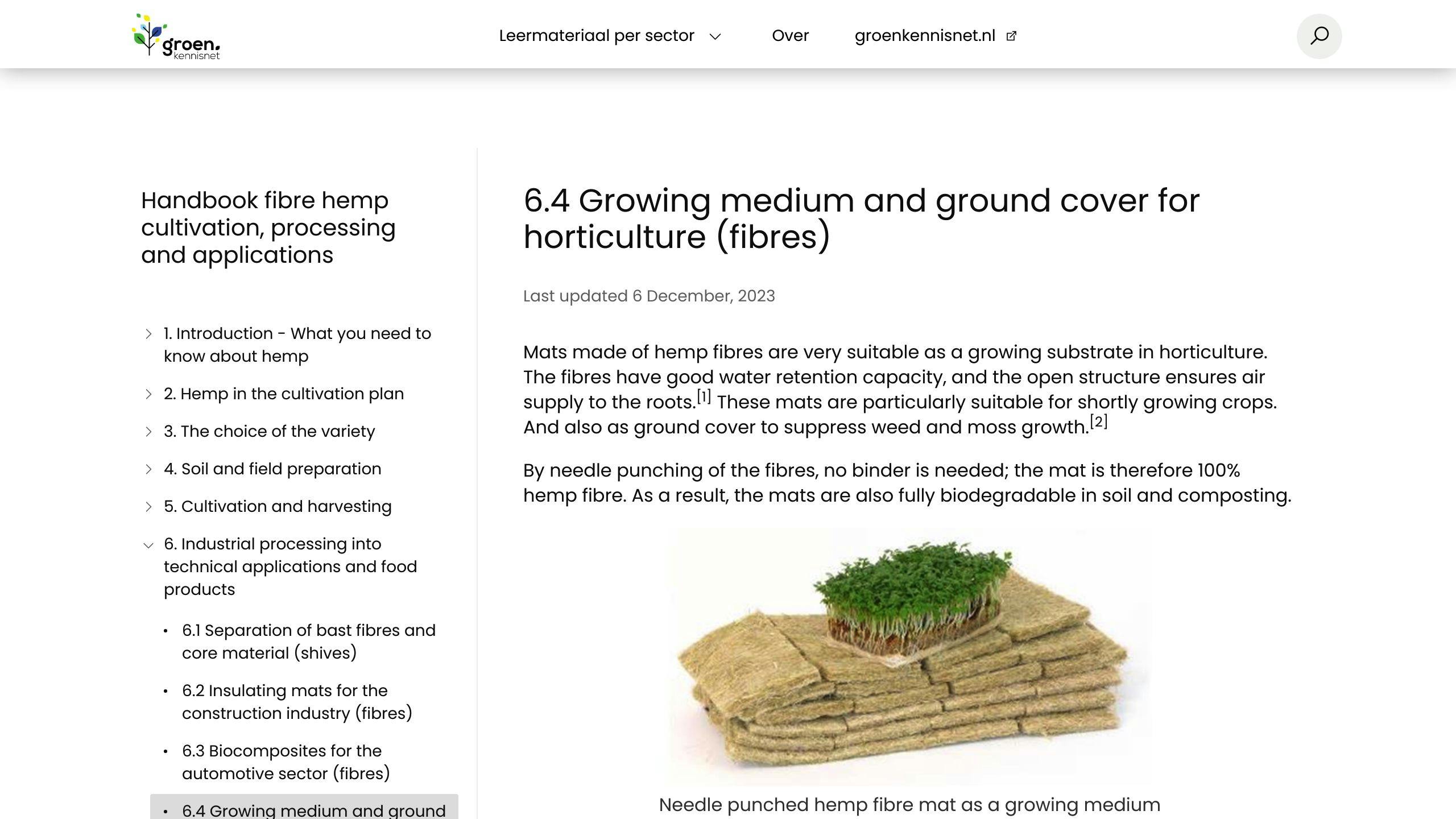The cannabis industry is rapidly growing, but traditional cultivation methods can harm the environment. Adopting eco-friendly practices is crucial for a more responsible and environmentally-conscious cannabis industry. These practices not only minimize the industry’s ecological footprint but also promote healthier plants and better harvests.
Here are 10 sustainable cannabis cultivation practices that are transforming the industry:
- Natural Growing Methods: Use organic practices like avoiding synthetic fertilizers, pesticides, and GMOs to preserve soil health, conserve water, and promote biodiversity.
- Water Conservation Techniques: Implement smart irrigation systems, track water use, and collect rainwater to reduce water waste.
- Energy-Saving Lighting and Climate Control: Use energy-efficient LED lights and smart climate control systems to cut energy consumption and costs.
- Living Soil and Composting: Create nutrient-rich living soil and compost organic waste to reduce the need for synthetic products.
- Managing Pests Naturally: Adopt Integrated Pest Management (IPM) techniques like cultural practices, biological controls, and organic pesticides to control pests without harsh chemicals.
- Sustainable Growing Media: Use renewable and eco-friendly growing media like hemp fiber, coco coir, or no-till organic gardening to reduce environmental impact.
- Waste Reduction and Recycling: Minimize waste and recycle or compost plant waste, while properly disposing of hazardous materials.
- Carbon Footprint Reduction: Switch to renewable energy sources, use energy-efficient equipment, and participate in carbon offset programs to reduce carbon emissions.
- Sustainable Packaging and Distribution: Explore eco-friendly packaging options, optimize distribution networks, and prioritize sustainability in supply chains.
- Following Environmental Rules: Understand and comply with environmental regulations regarding air and water quality, waste management, and land use.
By adopting these eco-friendly practices, cannabis cultivators can contribute to a greener future for the industry while improving crop quality, cutting costs, and appealing to eco-conscious consumers.
Related video from YouTube
Quick Comparison
| Practice | Conventional Methods | Eco-Friendly Methods |
|---|---|---|
| Growing Methods | Use synthetic chemicals, deplete soil, high water usage | Organic, preserve soil health, conserve water |
| Water Conservation | Prone to waste, overwatering | Smart irrigation, rainwater harvesting |
| Lighting and Climate Control | High energy use, emit heat | Energy-efficient LEDs, smart climate control |
| Soil and Composting | Synthetic fertilizers | Living soil, composting organic waste |
| Pest Management | Chemical pesticides | Integrated Pest Management (IPM) |
| Growing Media | Non-renewable, environmental impact | Sustainable options like hemp fiber, coco coir |
| Waste Management | Landfill, incineration | Recycling, composting, proper disposal |
| Carbon Footprint | Reliance on fossil fuels | Renewable energy, energy-efficient equipment |
| Packaging and Distribution | Excessive packaging, inefficient logistics | Eco-friendly packaging, optimized distribution |
| Environmental Compliance | Potential violations | Follow air, water, waste, and land use rules |
1. Natural Growing Methods
Using natural growing methods is key for eco-friendly cannabis cultivation. This approach focuses on sustainable practices from start to finish, avoiding synthetic fertilizers, pesticides, herbicides, and genetically modified organisms (GMOs).
Benefits of Natural Growing
- Preserves Soil Health: Natural methods maintain soil fertility for long-term crop growth.
- Conserves Water: Less water is needed compared to traditional cultivation.
- Promotes Biodiversity: Companion planting encourages natural pest control, eliminating the need for harmful chemicals.
Improved Product Quality
Cannabis grown naturally tends to have:
- Enhanced terpene and cannabinoid profiles
- Richer, more authentic flavors
| Conventional Methods | Natural Methods |
|---|---|
| Use synthetic fertilizers and pesticides | Avoid synthetic chemicals |
| May deplete soil over time | Maintain soil fertility |
| Higher water usage | Lower water usage |
| Potential harm to local ecosystems | Promote biodiversity and natural pest control |
2. Water Conservation Techniques
Saving water is vital in cannabis growing, as it requires a lot of water. Using smart irrigation systems, tracking water use, and collecting rainwater can greatly reduce water waste and lower the environmental impact.
Smart Irrigation Systems
Investing in efficient irrigation like drip systems or micro-sprinklers delivers water right to the plant roots. This prevents water loss from evaporation, runoff, and overspray. These systems ensure plants get just the right amount of water, reducing overall water needs.
Tracking Water Use
Regularly checking soil moisture and adjusting watering schedules based on weather, plant needs, and growth stage prevents overwatering. This approach gives plants enough water without excess, minimizing runoff and nutrient loss.
Rainwater Collection
Capturing and storing rainwater for irrigation supplements freshwater sources, reducing reliance on municipal water. Rainwater harvesting systems like rain barrels or cisterns collect and store rainwater runoff from roofs or surfaces, providing a free, sustainable water source for cannabis cultivation.
| Traditional Irrigation | Smart Irrigation |
|---|---|
| Prone to water waste | Minimizes water waste |
| Overwatering common | Delivers precise water amounts |
| Relies solely on freshwater sources | Utilizes rainwater harvesting |
| Higher environmental impact | Lower environmental impact |
3. Energy-Saving Lighting and Climate Control
Growing cannabis indoors requires a lot of energy for lighting and climate control systems. Using energy-efficient options can cut costs and reduce environmental impact.
LED Lights: Bright and Energy-Smart

LED (Light Emitting Diode) lights are a game-changer for indoor cannabis cultivation. Compared to traditional HPS (High-Pressure Sodium) lights, LEDs:
- Use much less energy
- Produce less heat
- Last longer
| HPS Lights | LED Lights |
|---|---|
| High energy use | Low energy use |
| Emit more heat | Emit less heat |
| Shorter lifespan | Longer lifespan |
| Higher environmental impact | Lower environmental impact |
Smart Climate Control Systems
Heating, ventilation, and air conditioning (HVAC) systems are crucial for maintaining the right growing environment. But they can also consume a lot of energy if not optimized.
To save energy:
- Use HVAC systems with high energy efficiency ratings
- Install smart climate control systems that monitor and adjust temperature and humidity levels automatically
Smart climate control systems can work together with LED lights to further reduce energy waste and environmental impact.
4. Living Soil and Composting
Using living soil and composting are simple yet powerful ways to grow cannabis sustainably. Living soil is a natural growing medium made from organic materials like compost, coco coir, peat moss, and aged bark. As these break down, they create a nutrient-rich environment for plants to thrive.
Benefits of Living Soil
- Provides nutrients for healthy plant growth
- Improves soil structure and quality
- Reduces need for synthetic fertilizers and pesticides
- Cost-effective and eco-friendly
To create living soil, growers mix and allow organic materials to decompose, forming a living ecosystem that supports plants.
Composting is another key part of living soil. By composting organic waste, growers make a nutrient-rich fertilizer that nourishes plants. It also cuts down on waste from cannabis cultivation.
| Traditional Soil | Living Soil |
|---|---|
| Uses synthetic fertilizers | Uses organic materials |
| Can deplete soil over time | Maintains soil health |
| Potential chemical runoff | Reduces need for synthetic products |
| Higher environmental impact | Lower environmental impact |
Using living soil and composting are straightforward, sustainable practices that promote healthy plant growth while minimizing environmental harm.
5. Managing Pests Naturally
Controlling pests without harsh chemicals is key for eco-friendly cannabis growing. An approach called Integrated Pest Management (IPM) uses safe methods to keep plants healthy and pest-free.
Why IPM Matters
- Reduces need for pesticides, keeping your cannabis clean and safe
- Promotes plant health through preventive care and natural controls
- Protects the environment by minimizing impact on ecosystems and water
- Cost-effective in the long run by preventing major crop losses
- Follows regulations on pesticide use in cannabis cultivation
IPM Techniques
IPM combines several natural techniques:
| Technique | Description |
|---|---|
| Cultural Practices | Proper sanitation, crop rotation, and ideal growing conditions discourage pests. |
| Biological Controls | Introducing beneficial insects like ladybugs and lacewings that prey on pests. |
| Mechanical Controls | Using physical barriers like row covers or netting to block pests. |
| Organic Pesticides | As a last resort, using approved organic pesticides when other methods aren’t enough. |
sbb-itb-430f9b7
6. Sustainable Growing Media
Using sustainable growing media is crucial for eco-friendly cannabis cultivation. The choice of growing medium impacts the environment, so growers should select sustainable options.
No-Till Organic Gardening

No-till organic gardening is an excellent sustainable approach. By building and maintaining an active soil ecosystem, containers rarely need changing between grows. Simply remove the root ball and replant. This method reduces the need for frequent medium changes and eliminates expensive nutrients.
Hemp Fiber Growing Medium

Hemp fiber is a renewable resource grown without harmful pesticides or excessive water. It provides:
- Excellent drainage
- Natural nutrients
- Healthy root development support
Hemp fiber also retains moisture well, ensuring a stable water supply for roots.
Coco Coir: A Sustainable Choice

Coco coir is a natural, cost-effective, and eco-friendly alternative to traditional growing mediums. It’s a by-product of the coconut industry. Coco coir is an excellent option for growers aiming to reduce their environmental impact.
| Growing Medium | Advantages |
|---|---|
| No-Till Organic | – Reduces medium changes – Eliminates need for nutrients |
| Hemp Fiber | – Renewable resource – Excellent drainage – Retains moisture well |
| Coco Coir | – Natural and cost-effective – Eco-friendly alternative – Reduces environmental impact |
7. Waste Reduction and Recycling
Minimizing waste and recycling are vital for eco-friendly cannabis cultivation. Implementing strategies to reduce waste at every stage is crucial. This involves optimizing growing practices to minimize plant waste, using efficient extraction methods to maximize yield, and adopting packaging that minimizes excess materials.
Cannabis waste can be composted, sent to a landfill, incinerated, or processed through in-vessel digestion. Composting is an option if no chemicals were used on the plants. However, composting with chemicals can harm the soil and future plants.
Recycling companies like Cannabis Waste Solutions properly manage and dispose of cannabis waste. They collect and compost waste from production sites and dispose of any harmful waste correctly. Alternatively, producers can use an on-site in-vessel digestion system, a type of composting reactor. Multiple centers offer this service, but producers may also have their own on-site system with proper permits.
Waste Disposal Options
| Method | Description |
|---|---|
| Composting | Viable for chemical-free plant waste to create nutrient-rich soil. |
| Landfill | Sending waste to a designated landfill site. |
| Incineration | Burning waste in a controlled environment. |
| In-Vessel Digestion | Composting waste in an enclosed tank or reactor, on-site or at a facility. |
Waste Management Services
- Recycling Companies: Collect and properly dispose of cannabis waste, including composting and handling hazardous materials.
- On-Site Digestion Systems: Producers can have their own in-vessel digestion system with proper permits for on-site waste processing.
8. Carbon Footprint Reduction
Lowering the carbon footprint of cannabis cultivation is vital for a sustainable future. The industry uses a lot of energy, and it’s crucial to adopt eco-friendly practices to minimize its environmental impact. Here are some ways to reduce the carbon footprint:
Renewable Energy Sources
Cannabis growers can switch to renewable energy sources like solar, wind, or hydro power to reduce their reliance on fossil fuels. This not only cuts carbon emissions but also lowers energy costs over time. Many governments and organizations offer incentives and subsidies for businesses that adopt renewable energy, making it a more accessible option.
Energy-Efficient Equipment
Upgrading to energy-efficient equipment like LED grow lights, HVAC systems, and dehumidifiers can significantly reduce energy consumption. These devices use less power and produce less heat, resulting in lower energy bills and a reduced carbon footprint.
Carbon Offset Programs
Cannabis businesses can join carbon offset programs, which involve investing in projects that reduce greenhouse gas emissions, such as reforestation or renewable energy projects. This helps to offset the carbon footprint of their operations and contributes to a more sustainable future.
| Approach | Description |
|---|---|
| Renewable Energy Sources | Switch to solar, wind, or hydro power to reduce reliance on fossil fuels. Incentives and subsidies available. |
| Energy-Efficient Equipment | Upgrade to energy-efficient LED lights, HVAC systems, and dehumidifiers to reduce energy consumption and costs. |
| Carbon Offset Programs | Invest in projects that reduce greenhouse gas emissions, like reforestation or renewable energy, to offset carbon footprint. |
9. Sustainable Packaging and Distribution
As cannabis businesses grow, their environmental impact increases. Packaging and distribution play a big role. The industry relies heavily on single-use plastics, excessive packaging, and inefficient logistics, leading to waste and carbon emissions. To address this, cannabis companies can adopt eco-friendly packaging options, optimize distribution networks, and prioritize sustainability in their supply chains.
Eco-Friendly Packaging Choices
Cannabis businesses can explore sustainable packaging alternatives like:
- Bioplastics: Made from renewable plant-based resources, compostable, and lightweight.
- Recycled Paper and Cardboard: Recyclable and biodegradable.
- Glass and Metal: Reusable and recyclable.
- Innovative Materials: Bamboo, hemp, and others.
These options reduce plastic waste and carbon footprint.
Optimizing Distribution
Efficient logistics and distribution networks can significantly cut carbon emissions and waste. Strategies include:
- Route Optimization: Planning efficient delivery routes.
- Shipment Consolidation: Combining multiple shipments into one.
- Electric or Hybrid Vehicles: Using eco-friendly transportation.
- Last-Mile Delivery: Delivering directly to customers, reducing packaging waste and emissions.
Sustainable Supply Chains
Cannabis businesses can prioritize sustainability by:
- Sourcing from Eco-Friendly Suppliers: Working with suppliers committed to sustainability.
- Reducing Packaging Waste: Minimizing waste throughout the supply chain.
- Promoting Recycling and Composting: Implementing recycling and composting programs.
| Approach | Description |
|---|---|
| Eco-Friendly Packaging | Bioplastics, recycled paper, glass, metal, bamboo, hemp, etc. |
| Optimizing Distribution | Route optimization, shipment consolidation, electric/hybrid vehicles, last-mile delivery. |
| Sustainable Supply Chains | Sourcing from eco-friendly suppliers, reducing packaging waste, promoting recycling and composting. |
10. Following Environmental Rules
Cannabis growers must follow environmental rules to operate legally and reduce their impact on nature. Not following these rules can lead to fines, penalties, or losing their license. This section explains the importance of following rules and how to navigate them.
Understanding Environmental Rules
Cannabis growers must follow rules about air and water quality, waste management, and land use. These rules vary by state and local areas, so it’s important to know the specific requirements where you operate.
Key Rules to Follow
- Air Quality Rules: Growers must control emissions, odors, and use air filters. This may require permits and meeting emissions standards.
- Water Quality Rules: Growers must not contaminate water sources like rivers and groundwater. This includes proper wastewater disposal, irrigation management, and water conservation.
- Waste Management Rules: Growers must properly dispose of hazardous materials like chemicals and pesticides.
- Land Use Rules: Growers must follow local zoning laws and building codes.
Best Practices for Following Rules
- Regular Checks: Regularly check your operations to ensure you follow environmental rules.
- Use Sustainable Methods: Use energy-efficient lighting, conserve water, and reduce waste.
- Stay Up-to-Date: Keep informed about changing rules and attend industry events to learn more.
- Get Expert Help: Consult environmental experts and lawyers to ensure you comply with rules.
Conclusion
As we wrap up our exploration of the 10 eco-friendly cannabis cultivation practices, it’s crucial to highlight the importance of adopting sustainable methods in the cannabis industry. By incorporating these practices, growers can reduce their environmental impact, improve crop quality, cut costs, and appeal to eco-conscious consumers.
The cannabis industry has a unique chance to lead by example and set new standards for sustainable agriculture. By supporting environmentally responsible cultivation, consumers can drive positive change and promote a greener future. Remember, every small step matters, and collective efforts can significantly impact the environment.
As demand for sustainable products grows, cannabis businesses must prioritize eco-friendly practices to stay competitive and socially responsible. By doing so, we can ensure a thriving cannabis industry that benefits both the economy and the planet.
Let’s work together to create a more sustainable future for cannabis cultivation.
Key Takeaways
- Adopting eco-friendly practices reduces environmental impact
- Sustainable methods improve crop quality and yields
- Eco-conscious consumers prefer sustainable cannabis products
- The cannabis industry can lead the way in sustainable agriculture
- Supporting sustainable cultivation promotes positive environmental change
- Collective efforts drive significant environmental impact
- Prioritizing eco-friendly practices ensures industry competitiveness and social responsibility
- A sustainable cannabis industry benefits both the economy and the planet
| Conventional Practices | Eco-Friendly Practices |
|---|---|
| High environmental impact | Reduced environmental impact |
| Potential crop quality issues | Improved crop quality and yields |
| Reliance on non-renewable resources | Use of renewable resources |
| Higher operational costs | Cost savings in the long run |
| Limited appeal to eco-conscious consumers | Appeal to growing eco-conscious market |
| Contribution to environmental degradation | Promotion of environmental sustainability |
Related posts
- How to Make Money in the Weed Industry: Marketing Strategies
- Weed Plant Chain Content Creation
- Progrowth Strategies for Cannabis Brands
- What State Can You Grow the Most Weed: Branding Strategies

